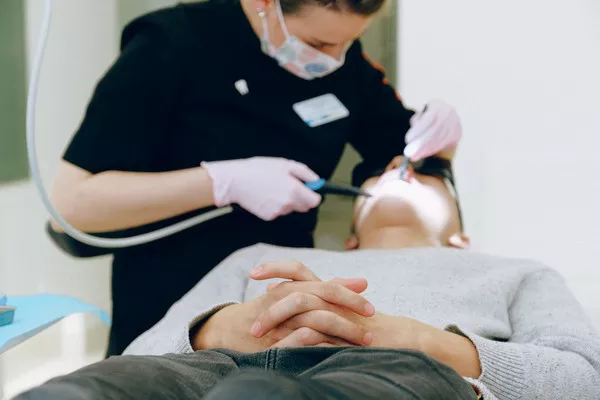Experiencing a yellow tongue after wisdom tooth extraction can be concerning, but it is often a normal part of the healing process. This article will explore the reasons behind this discoloration, including the healing process, bruising and swelling, blood vessel damage, oral hygiene practices, signs of infection, dietary advice, other medical conditions, and the importance of professional consultation. Understanding these factors can help you manage your recovery and know when to seek medical advice.
Healing Process
Trauma to Surrounding Tissue
After wisdom tooth extraction, the mouth undergoes a significant healing process. The extraction itself is a form of trauma to the surrounding tissue, which can result in various symptoms, including a yellow tongue. This discoloration is typically temporary and is part of the body’s natural response to injury. The healing process involves inflammation, tissue regeneration, and the removal of dead cells, all of which can contribute to changes in the appearance of the tongue.
Normal Healing Symptoms
During the healing process, you may notice several symptoms, including swelling, redness, and discoloration. A yellow tongue is one of these symptoms and usually does not indicate a serious problem. It is important to monitor your symptoms and understand that some degree of discoloration is normal as your body repairs itself.
Bruising and Swelling
Impact of BruisingEdit
Bruising is a common occurrence after wisdom tooth extraction. The process of removing the tooth can cause minor bleeding and trauma to the surrounding tissue, leading to bruising. This bruising can sometimes extend to the tongue, resulting in a yellowish appearance. As the bruise heals, the color may change from yellow to green, brown, or purple before returning to normal.
Swelling Effects
Swelling is another typical response to the trauma of tooth extraction. The body’s inflammatory response can cause fluid to accumulate in the tissues around the extraction site, including the tongue. This swelling can compress blood vessels and alter the appearance of the tongue, contributing to a yellow discoloration. As the swelling subsides, the color of your tongue should gradually return to normal.
Blood Vessel Damage
Contribution of Blood Vessel Damage
During the extraction process, small blood vessels in the surrounding tissue can be damaged. This damage can cause localized bleeding, which may contribute to the yellow color of your tongue. The presence of old blood in the tissue can create a yellowish hue as it breaks down and is reabsorbed by the body. This is a normal part of the healing process and should resolve on its own over time.
Healing of Blood Vessels
As the small blood vessels heal, the yellow discoloration should fade. This process can take several days to a couple of weeks, depending on the extent of the trauma and your body’s healing response. Maintaining good oral hygiene and following your dentist’s post-extraction care instructions can help support this healing process.
see also: How you feel after wisdom teeth removal?
Oral Hygiene
Importance of Oral Hygiene
Maintaining good oral hygiene after wisdom tooth extraction is crucial to prevent infection and aid in the healing process. Proper oral care can help remove bacteria and food particles that might otherwise contribute to discoloration and other complications. It is important to follow your dentist’s recommendations for post-extraction care to ensure a smooth recovery.
Post-Extraction Care Tips
Gentle Brushing: Use a soft-bristled toothbrush and avoid the extraction site when brushing your teeth. Be gentle to prevent disturbing the healing tissue.
Saltwater Rinse: Rinse your mouth with a warm saltwater solution several times a day, especially after meals. This helps keep the extraction site clean and promotes healing.
Avoid Mouthwash: Do not use commercial mouthwash unless advised by your dentist, as it can irritate the extraction site.
Stay Hydrated: Drink plenty of water to keep your mouth moist and help flush out bacteria.
Infection Signs
Recognizing Infection
While a yellow tongue can be a normal part of the healing process, it is important to be aware of signs of infection. An infection can occur if bacteria enter the extraction site and cause inflammation and pus formation. Recognizing the signs of infection early can help you seek prompt treatment and prevent further complications.
Signs to Watch For
Increased Pain: Persistent or worsening pain that does not improve with pain medication.
Swelling: Significant swelling that does not subside or continues to worsen.
Fever: A fever may indicate that your body is fighting an infection.
Redness: Redness spreading from the extraction site can be a sign of infection.
Drainage: Pus or foul-smelling discharge from the extraction site.
Difficulty Swallowing: Severe swelling that affects your ability to swallow or breathe.
If you experience any of these symptoms, contact your dentist or oral surgeon immediately for evaluation and treatment.
Dietary Advice
Foods to Avoid
After wisdom tooth extraction, it is important to avoid certain foods that can irritate the extraction site or contribute to discoloration. Foods and beverages that are too hot, cold, spicy, or acidic can cause discomfort and slow the healing process. Additionally, certain foods can stain the tongue and teeth, exacerbating discoloration.
Recommended Foods
Soft Foods: Stick to soft foods like yogurt, mashed potatoes, applesauce, and smoothies. These are easy to eat and less likely to irritate the extraction site.
Cool Foods: Consuming cool foods and beverages can help reduce swelling and provide comfort. Ice cream and cold drinks can be soothing.
Nutrient-Rich Foods: Eating foods rich in vitamins and minerals, such as fruits and vegetables, can support the healing process.
Hydration: Drink plenty of water to stay hydrated and help flush out bacteria.
Avoid using straws, as the suction can dislodge the blood clot that forms in the extraction site, leading to dry socket, a painful condition that can delay healing.
see also: What not to do when wisdom teeth removed?
Medical Conditions
Jaundice and Bacterial Overgrowth
While a yellow tongue after wisdom tooth extraction is often related to the healing process, other medical conditions can also cause a yellow tongue. Jaundice, a condition caused by elevated bilirubin levels in the blood, can lead to yellowing of the skin and mucous membranes, including the tongue. Additionally, excessive bacterial growth in the mouth can cause a yellow coating on the tongue.
When to Seek Medical Advice
If you have persistent yellow discoloration of the tongue or other symptoms suggestive of a systemic condition, it is important to seek medical advice. Conditions like jaundice require prompt medical evaluation and treatment. Similarly, if you suspect bacterial overgrowth or oral thrush, a healthcare professional can provide appropriate treatment.
Professional Consulting
Importance of Consulting Your Dentist
If you are concerned about the color of your tongue or your recovery after wisdom tooth extraction, it is important to consult with your dentist or oral surgeon. They can evaluate your symptoms, provide reassurance, and recommend appropriate treatments if necessary. Professional guidance can help ensure that your recovery is on track and address any issues that may arise.
Regular Follow-Up Appointments
Attending follow-up appointments with your dentist or oral surgeon is crucial for monitoring your healing progress. During these visits, your dentist can assess the extraction site, check for signs of infection, and provide additional care instructions. Regular follow-ups can help detect and address any complications early, ensuring a smooth recovery.
Conclusion
Experiencing a yellow tongue after wisdom tooth extraction is a common and usually benign part of the healing process. Understanding the reasons behind this discoloration, such as trauma to surrounding tissue, bruising, swelling, and blood vessel damage, can help alleviate concerns. Maintaining good oral hygiene, following dietary advice, and recognizing signs of infection are important steps in ensuring a smooth recovery. Additionally, being aware of other medical conditions that can cause a yellow tongue and seeking professional consultation when needed can provide peace of mind and appropriate care.
By following your dentist’s post-extraction care instructions and attending regular follow-up appointments, you can support your body’s natural healing process and address any issues that may arise. If you have any concerns about your recovery or the color of your tongue, do not hesitate to reach out to your dental professional for personalized advice and treatment options.
FAQs about Wisdom Teeth Removal and Oral Care
1. Can Wisdom Teeth Removal Affect Your Tongue?
Yes, wisdom teeth removal can sometimes affect your tongue. Possible effects include:
Numbness or Tingling: Due to temporary nerve irritation or damage during the extraction.
Swelling: Post-surgical swelling can cause discomfort or pressure on the tongue.
Sore Spots: Surgical sites and stitches might cause the tongue to feel sore when moving around.
These effects are usually temporary, but if they persist, contact your dentist or oral surgeon.
2. Is Yellow Normal After Tooth Extraction?
Yes, yellow discoloration can be normal after a tooth extraction. It often indicates:
Healing Process: Yellow or white film over the extraction site can be part of the normal healing process.
Fibrin Formation: A yellowish substance called fibrin forms as part of the body’s natural healing and clotting process.
If the yellow color is accompanied by severe pain, a foul odor, or pus, it could indicate an infection, and you should see your dentist immediately.
3. How Do You Clean Your Tongue After Wisdom Teeth Removal?
Cleaning your tongue after wisdom teeth removal should be done gently to avoid disturbing the surgical site:
Use a Soft Tongue Scraper: Gently clean your tongue with a soft tongue scraper, avoiding the back where it might affect the extraction site.
Brush Gently: Use a soft-bristled toothbrush to lightly brush your tongue.
Rinse with Salt Water: Use a warm salt water rinse to help keep your mouth clean and reduce bacteria. Do this gently to avoid disturbing the extraction area.
4. How Do You Know If Your Mouth is Infected After Wisdom Teeth Removal?
Signs of infection after wisdom teeth removal include:
- Increased Pain: Pain that worsens over time instead of improving.
- Swelling: Persistent or increased swelling around the extraction site.
- Fever: A high temperature indicating the body is fighting an infection.
- Pus or Discharge: Yellow or green discharge from the extraction site.
- Foul Odor or Taste: Persistent bad breath or a bad taste in the mouth.
- Difficulty Opening Mouth: Difficulty opening your mouth (trismus) could indicate an infection spreading to the jaw muscles.
You Might Be Interested In
































